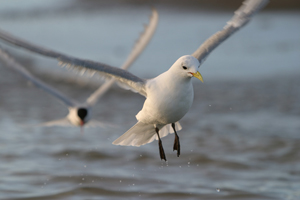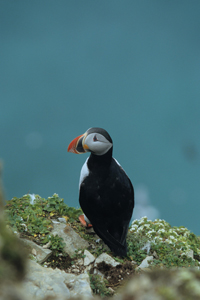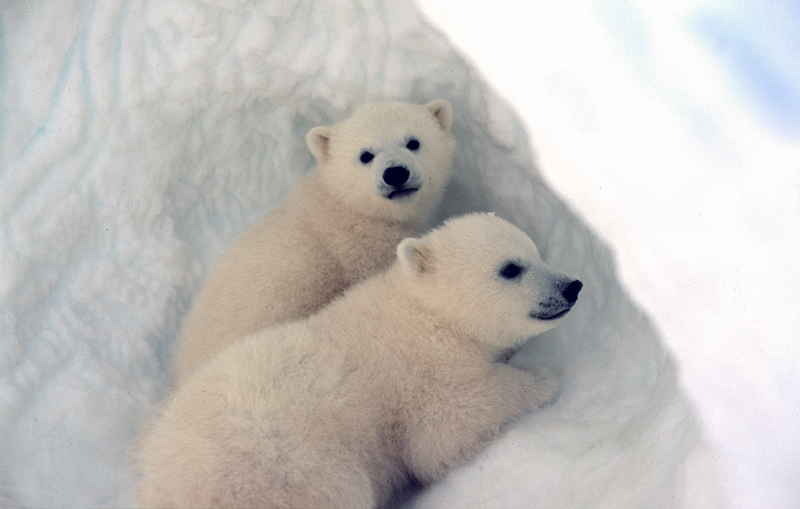Hopen's vegetation and wildlifeBy Øystein Overrein (ed.), Jørn Henriksen, Bjørn Fossli Johansen, Kristin Prestvold
You can register your observations of marine mammals around Svalbard in the Norwegian Polar Institute’s database Marine Mammals Sightings. 

The vegetation on Hopen belongs to the Arctic polar desert zone, characterized by the Svalbard poppy (Papaver dahlianum). The most vegetated areas can be found underneath the bird cliffs and in the areas towards the sea. Bird cliff species distinguish wildlife on the island. Black-legged kittiwakes and Brünnich’s guillemots are the most abundant and Hopen has the largest kittiwake colonies in Svalbard. Northern fulmar, black guillemot, little auk, Atlantic puffin and glaucous gull also occur here on bird cliffs. Most of the cliffs are situated in the south of the island, in Iversenfjellet, Werenskioldfjellet and Kollerfjellet. However, the largest bird cliff is located in the north of the island, in Nørdstefjellet. Other bird species on the island are Arctic skua, great skua and purple sandpiper. Common eiders occur, but in low numbers. Hopen is on BirdLife International’s list of important bird areas in Europe. Hopen is also an important migration and denning area for polar bears. The number of dens varies. Previously, winters with poor ice conditions prior to Christmas have meant there have been no dens at all, whereas winters with early ice have brought as much as 36 dens (1996). During the winters 2005/2006 and 200672007, there was no ice around Hopen before Christmas and no dens were recorded. 7–8 dens were recorded in 2008, after that no dens has been recorded. It looks like Hopen is loosing its function as a denning area for the polar bear. According to annual registrations carried out at Hopen’s meteorological station since 1976, there have normally been between 150–300 polar bear visits each winter in the period of 1983–2001. In recent years, the polar bear has been a rare guest on the island. Seals, an important source of nutrition for the polar bears, are abundant in the drift ice around the island. There are no reindeer on Hopen, and only very few Arctic foxes. Foxes used to be more numerous. Early in the last century 96 foxes were caught during three overwinterings. Updated March 2015 |
The Cruise Handbook is also available in book formHard cover with numerous pictures - 249 pages - NOK 249.00 Norwegian Polar Institute |
 Norsk
Norsk